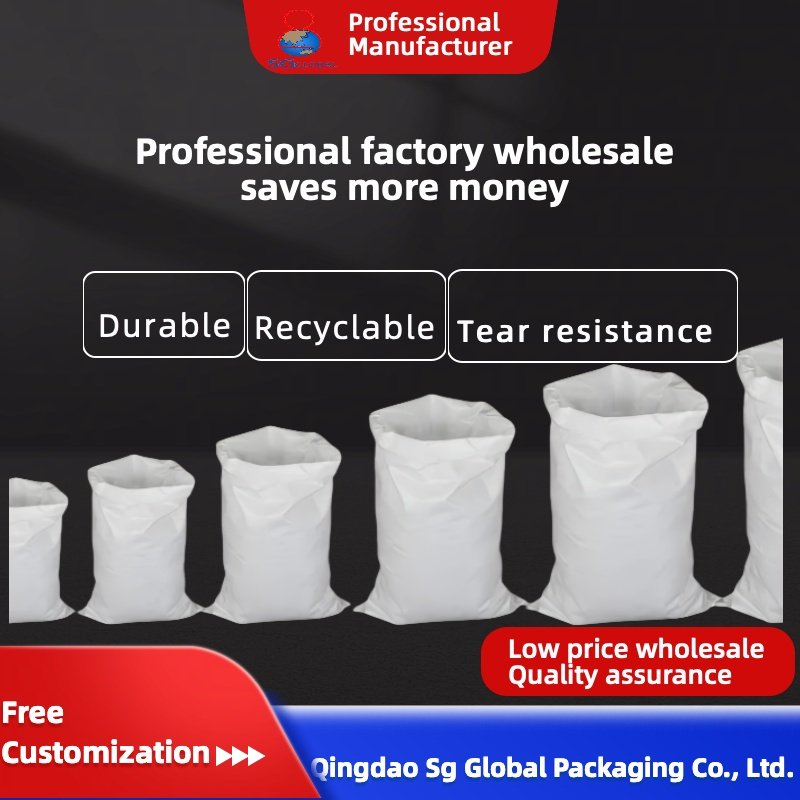What is the difference between HDPE and PP woven sacks?
The difference between HDPE (High-Density Polyethylene) and PP (Polypropylene) woven bags sacks lies in their material properties, performance characteristics, and ideal applications. Though both are poly olefins and share similarities (e.g., recyclability, moisture resistance), key distinctions affect their suitability for specific uses. PP woven sack is made of durable polypropylene woven fabric roll.Here's a breakdown:
1. Material Properties
Property | HDPE Woven Sacks | PP Woven Sacks |
Chemical Structure | Linear, high crystallinity | Semi-crystalline, methyl group side chain |
Density | Higher (0.94–0.97 g/cm³) | Lower (0.90–0.91 g/cm³) |
Melting Point | Lower (~130°C) | Higher (~160°C) |
Flexibility | Stiffer, more brittle (esp. in cold) | More flexible, better impact resistance |
Surface Feel | Rougher, "dry" feel | Softer, slightly waxy feel |
2. Performance Comparison
Characteristic | HDPE Sacks | PP Sacks |
Strength | Higher tensile strength | Slightly lower tensile strength, but better elongation (stretch resistance) |
UV Resistance | Naturally better UV stability | Poor UV resistance unless treated (requires additives) |
Cold Resistance | Becomes brittle below 0°C | Retains flexibility down to -20°C |
Moisture Barrier | Similar water resistance | Similar water resistance |
Chemical Resistance | Resistant to acids, alkalis, solvents | Slightly better resistance to organic solvents & acids |
Abrasion Resistance | Better resistance to scraping/friction | Moderate |
Cost | Generally cheaper | Slightly more expensive |
3. Manufacturing & Appearance
HDPE:
Produces opaque/translucent tapes with a matte finish.
Bags feel crisper and noisier.
PP:
Tapes are translucent to transparent (depending on additives).
Bags feel softer and quieter when handled.
4. Typical Applications
HDPE Sacks | PP Sacks |
✔️ Heavy-duty products (e.g., construction sand, gravel) | ✔️ Food grains (rice, wheat), flour, sugar |
✔️ Applications requiring high abrasion resistance | ✔️ Fertilizers, chemicals, animal feed |
✔️ Outdoor storage (better innate UV resistance) | ✔️ Retail packaging (laminated for print) |
❌ Not ideal for sub-zero temperatures | ✔️ Cold climates (remains flexible) |
❌ Requires UV treatment for outdoor use |
5. Key Decision Factors
Choose HDPE if:
You prioritize cost savings, maximum stiffness, UV exposure without additives, or abrasion resistance (e.g., mining, construction).
Choose PP if:
You need flexibility in cold temps, better chemical resistance, higher melting point, or a softer finish (e.g., food, agriculture, retail).
Summary Table
Aspect | HDPE | PP |
Best For | Heavy/abrasive loads, outdoor use | Food, chemicals, cold environments |
Avoid | Sub-zero temperatures | UV exposure (unless stabilized) |
Cost | Lower | Slightly higher |
Eco-Footprint | Both recyclable; PP slightly more energy-intensive to produce |
In practice, PP is more widely used globally due to its versatility, but HDPE dominates niche markets where rigidity and innate UV resistance are critical. Always specify UV stabilization for PP sacks if outdoor storage is needed!









